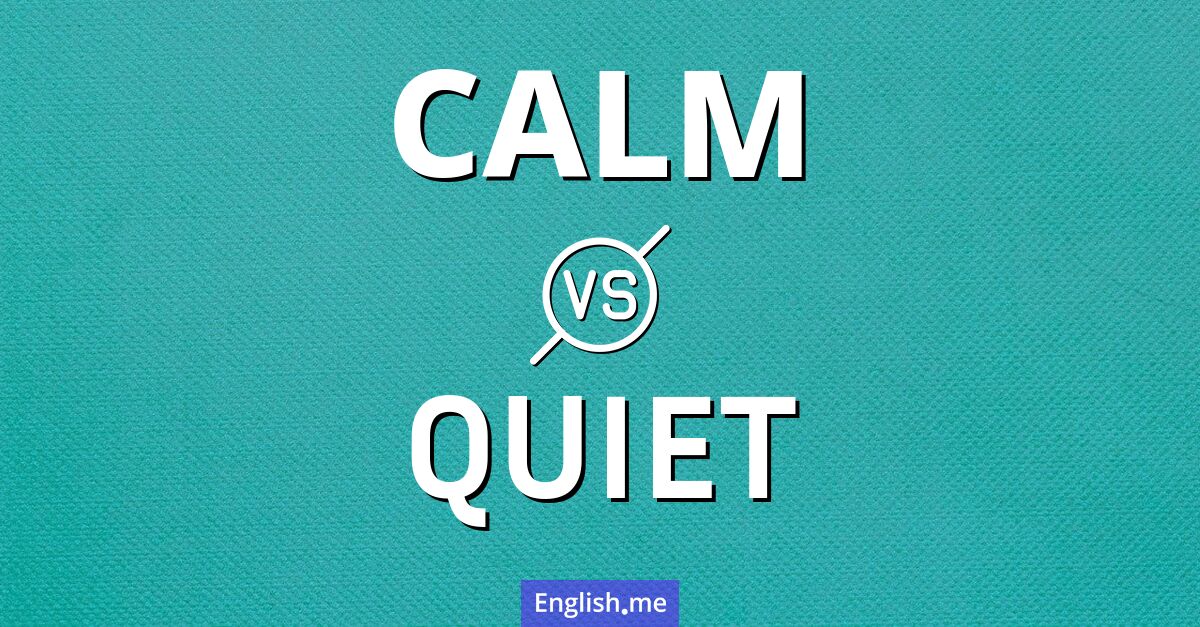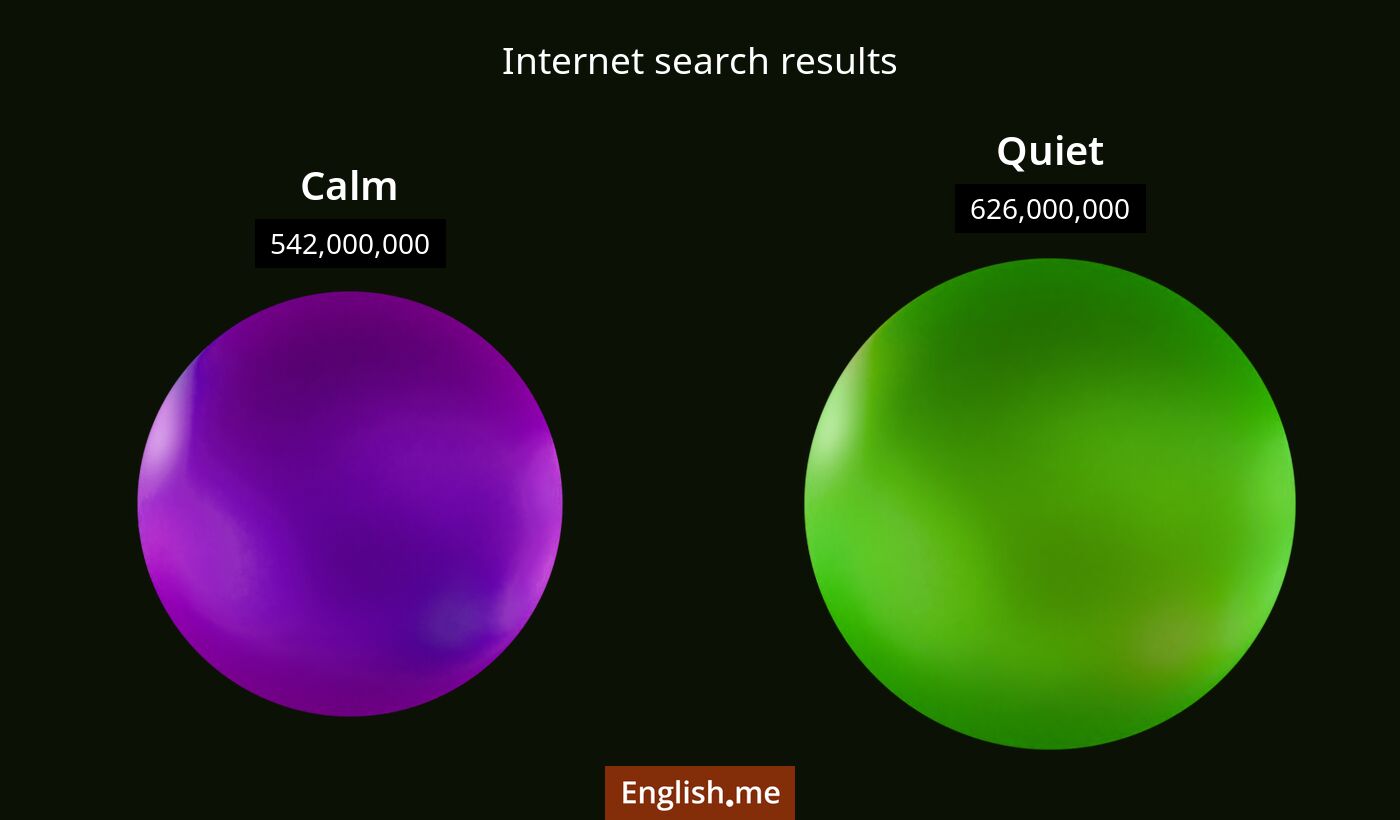Harmony and hush: comparing "calm" and "quiet"
Reviewed and edited by  Anwar Kareem 09/11/2024, 01:41
Anwar Kareem 09/11/2024, 01:41
English.me team member

 What is similar?
What is similar?
Both "calm" and "quiet" describe states that are free from noise, disturbance, or agitation. They are often used to describe peaceful or serene conditions in both environments and behavior.
 What is different?
What is different?
The word "calm" often refers to a state of tranquility or composure, especially in terms of emotions or behavior. "Quiet", on the other hand, primarily refers to the absence of noise or sound. "Calm" can describe people, emotions, or environments, whereas "quiet" is more commonly used to describe sounds and environments.
 Which one is more common?
Which one is more common?

 Examples of usage
Examples of usage
Calm- The sea is calm today, perfect for sailing.
- She remained calm during the emergency.
- A calm mind is essential for meditation.
- The library is a quiet place to study.
- Please be quiet while the baby is sleeping.
- He enjoys the quiet of the early morning.

 English
English español
español française
française italiano
italiano deutsche
deutsche 日本語
日本語 polski
polski česky
česky svenska
svenska Türkçe
Türkçe Nederlands
Nederlands